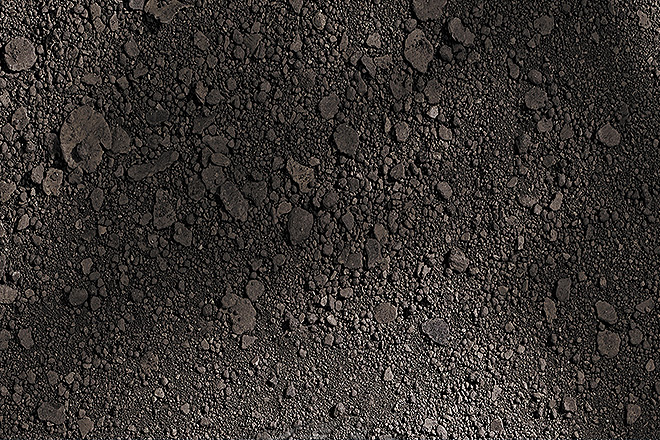Our Product
for view more details click on product name
for view more details click on product name
Ball clays are kaolinitic sedimentary clays that commonly consist of 20-80% kaolinite, 10-25% mica, 6-65% quartz. Localized seams in the same deposit have variations in composition, including the quantity of the major minerals, accessory minerals and carbonaceous materials such as lignite. They are fine-grained and plastic in nature, and, unlike most earthenware clays, produce a fine quality white-coloured pottery body when fired, which is the key to their popularity with potters.
Ball clays are relatively scarce deposits due to the combination of geological factors needed for their formation and preservation. They are mined in parts of the Eastern United States and from three sites in Devon and Dorset in South West England. They are commonly used in the construction of many ceramic articles, where their primary role, apart from their white colour, is to either to impart plasticity or to aid rheological stability during the shaping processes.
ball clay properties:
Ball clay is essential for ceramic production because of its high plasticity and strength. ball clay properties include:

Ball clay is an extremely rare mineral found in very few places around the world. Its name dates back to the early methods of mining when specialized hand tools were used to extract the clay in rough cube shapes of about 30 cm. As the corners were knocked through handling and storage these cubes became rounded and ‘ball’ shaped. It also is sometimes referred to as plastic clay.
Ball clays are sedimentary in origin. Ancient rivers and streams washed kaolinite (formed from decomposed granite) from its parent rock. As the streams flowed from upland area they mixed with other clay minerals, sands, gravels and vegetation before settling in low-lying basins to form overlaying seams of ball clay. Ball clays usually contain three dominant minerals: from 20-80% kaolinite, 10-25% mica, and 6-65% quartz. In addition, there are other ‘accessory’ minerals and some carbonaceous material (derived from ancient plants) present. The wide variation both in mineral composition and in the size of the clay particles results in different characteristics for individual clay seams within a deposit.
Ball clay is extracted using mechanical equipment, of which the most popular are hydraulic “back-hoe” excavators, that work as “benches” cut into the quarry to access the seams of clay. Individual raw clay selections are blended carefully according to pre-determined recipes to provide a product with a consistent and predictable range of characteristics and behavior. The first stage in processing then is to shred (or ‘kibble’) the blended clay into smaller, more regular lumps about the size of a golf ball. Much blended clay is sold in this shredded form. Further processing through drying and grinding yields powdered plastic clays and ceramics manufacturers (particularly in the sanitaryware sector) also have benefited from the development of refined ball clays which offer improved performance and reduced manufacturing process costs. Refined clays are available in ‘noodled’ and slurried form. Ball clays also are sold in a partially dried form, which consist of golf ball size materials that are not powdered. Internationally, deposits of high quality ball clay are much rarer than those of kaolin.
Ceramics: Ball clays are used in many different industries, but in particular form a vital component in ceramic manufacturing. Kaolin (‘china clay’) produces a very white color when it is fired, but used alone it is brittle and weak and must be mixed with ball clay to produce a workable, malleable raw material. As a result of their sedimentary origin, raw ball clays have a wide range of colors. However, many of them are valued by the ceramics industry for their white-firing properties, which are determined by the levels of iron and other coloring/fluxing oxides within the clay.
Sanitary-ware: A ‘ceramic body’ for sanitaryware typically includes 30% ball clay to provide plasticity and workability, 20% kaolin, 30% feldspar and 20% quartz/silica.
Tableware: Ceramic tableware utilizes ball clay to provide high plasticity and a good white-fired color, combined with kaolin, feldspar and quartz.
Wall and floor tiles: Combined with talc, feldspar, quartz/silica and kaolin, ball clays are utilized for their plasticity and bonding properties.
Glazes and engobes: Ball clays are also used in the production of coatings for ceramic products to ensure the perfect finish.
Refractory clays: An ability to resist the effects of extremely high temperatures makes ball clay ideal for use in refractory products such as kiln insulation and furniture.
Construction ceramics: Building materials such as bricks, clay pipes and roof tiles all contain ball clay.
Electrical porcelain insulators: You will find ball clays in the electrical porcelain components that provide insulation from high voltage currents.
Non-ceramic applications: These include the construction industry; horticulture, agriculture and amenity industries; use as fillers and extenders in polymers, adhesives, plastics, sealants, fertilizers and insecticides.